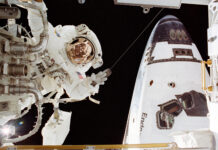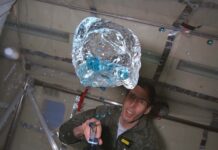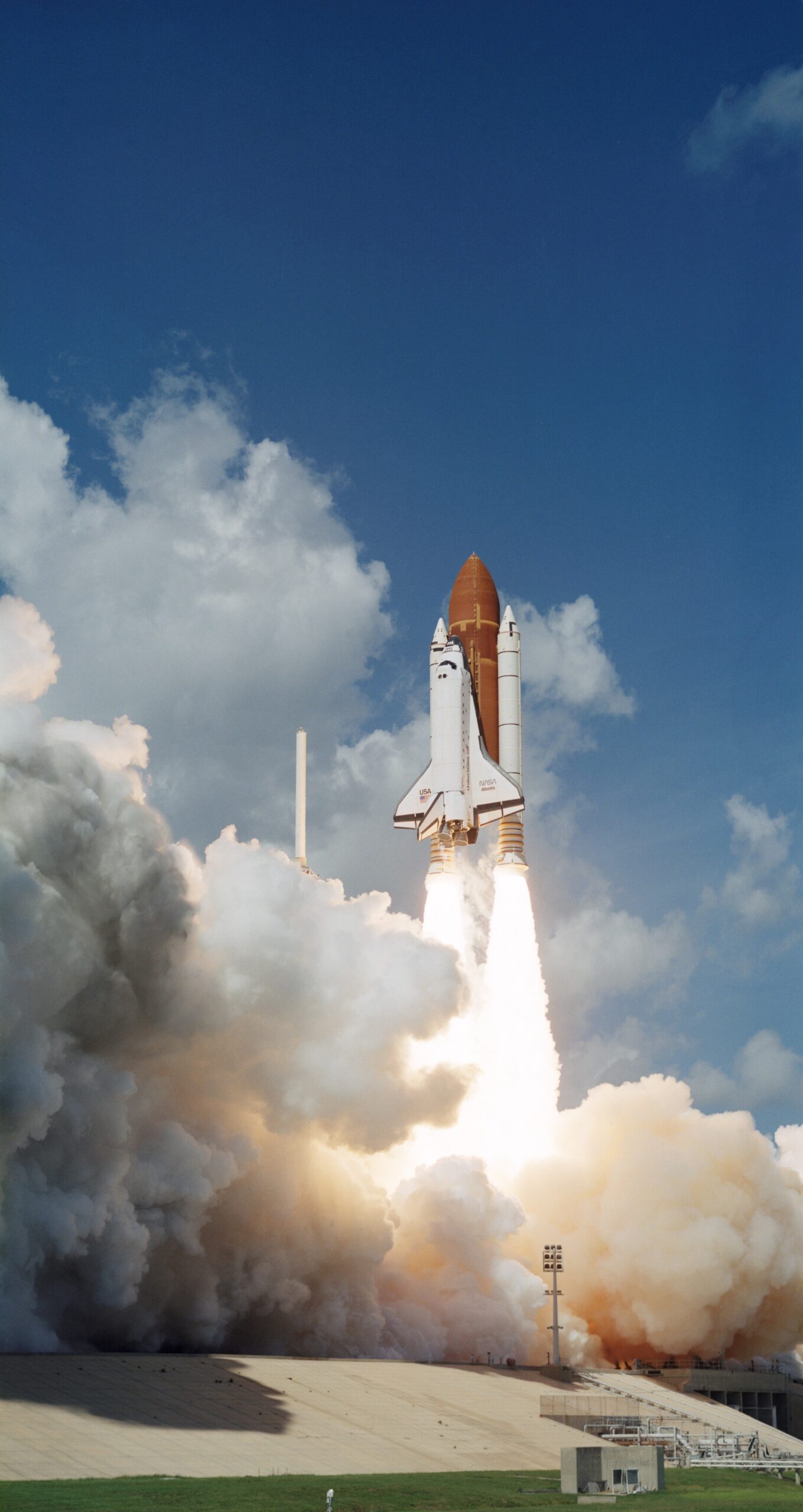On October 18, 1989, space shuttle Atlantis embarked on its fifth mission, designated STS-34, from NASA’s Kennedy Space Center in Florida. This historic flight was carried out by a crew of five astronauts, namely Commander Donald E. Williams, Pilot Michael J. McCulley, and Mission Specialists Shannon W. Lucid, Franklin R. Chang-Díaz, and Ellen S. Baker. Their mission was to deploy the Galileo spacecraft, managed by NASA’s Jet Propulsion Laboratory in Southern California, with the purpose of studying Jupiter.
STS-34 Mission Launch and Objectives
The Galileo spacecraft was successfully deployed on the first day of the mission, marking the start of its six-year journey to the largest planet in our solar system, Jupiter. Upon its arrival in December 1995, Galileo deployed an atmospheric probe into Jupiter’s dense atmosphere, while the main spacecraft entered orbit, conducting detailed studies of the planet for eight years.
The crew was announced in November 1988, with Williams, McCulley, Lucid, Chang-Díaz, and Baker chosen to carry out this ambitious mission. Williams and Lucid were veterans from NASA’s Class of 1978, having participated in previous shuttle missions, while this mission marked the first spaceflight for McCulley and Baker. A primary objective of the mission was to deploy the Galileo spacecraft and its Inertial Upper Stage (IUS), an essential component that would propel Galileo on its path to Jupiter.
Preparations and Challenges
The Galileo mission was a significant step in NASA’s efforts to study Jupiter, following the earlier Pioneer and Voyager flyby missions. The Jupiter Orbiter Probe mission was first proposed by NASA in 1975 and was officially approved by Congress in 1977. Originally, the launch was planned for 1982, but delays in the shuttle program and changes in the upper stage extended the timeline. The mission was eventually rescheduled for May 1986 aboard Atlantis on the STS-61G mission. However, the Challenger disaster in January 1986 resulted in additional delays and the cancellation of the Centaur upper stage.
Subsequently, the Galileo mission was remanifested onto the less powerful IUS, necessitating gravity assist maneuvers at Venus and twice at Earth to achieve the velocity required to reach Jupiter. These adjustments increased the transit time to six years. Despite these challenges, the mission’s launch window extended from October 12 to November 21, 1989, determined by the necessary planetary alignments for the gravity assists. During its journey, Galileo was also planned to provide unprecedented close-up studies of main belt asteroids.
Launch and Deployment
Atlantis returned to Kennedy Space Center on May 15, 1989, after completing the STS-30 mission, which deployed the Magellan spacecraft to Venus. Subsequently, preparations for STS-34 commenced at the Kennedy Space Center. Solid Rocket Boosters were stacked starting June 15, with their assembly completed by July 22. The external tank was then attached on July 30, and Atlantis was rolled over to the Vehicle Assembly Building on August 22 for mating with the SRBs and the external tank. Galileo, now mated to its IUS, was transferred to Launch Pad 39B on August 25, awaiting Atlantis’ arrival.
On October 18, Atlantis lifted off from Launch Pad 39B at 12:53 p.m. EDT. As the shuttle cleared the launch tower, control was handed over to the Mission Control Center at NASA’s Johnson Space Center in Houston. Shortly after reaching orbit, the crew prepared Atlantis for its primary mission: the deployment of the Galileo spacecraft. The Galileo and IUS combination was successfully deployed six hours and 20 minutes into the mission, marking the start of its journey to Jupiter.
Onward Journey of Galileo
Following its deployment, Galileo’s IUS fired to propel it on its circuitous journey through the inner solar system, employing gravity assists from Venus and Earth to reach Jupiter. During its journey, Galileo provided the first close-up studies of main belt asteroids Gaspra and Ida and observed the collision of Comet Shoemaker-Levy 9 with Jupiter. Upon reaching Jupiter on December 7, 1995, Galileo released its atmospheric probe, which transmitted valuable data as it descended through the planet’s atmosphere. The main spacecraft entered an elliptical orbit around Jupiter, conducting an extensive study of the planet and its moons for more than eight years, far exceeding its original 22-month mission.
Scientific Discoveries and Legacy
Galileo’s mission provided groundbreaking insights into Jupiter and its moons. Notably, Galileo made 11 close encounters with Europa, one of Jupiter’s icy moons. These observations revealed remarkable details about Europa’s surface, leading scientists to speculate about the presence of a vast ocean beneath its icy crust, raising the possibility of conditions favorable for life. This discovery has spurred further missions, including NASA’s Europa Clipper, launched in 2024, aiming to expand on Galileo’s findings when it arrives at Jupiter in 2030.
Conclusion
The STS-34 mission and the successful deployment of Galileo marked a monumental achievement in space exploration. The mission not only expanded our understanding of Jupiter and its moons but also demonstrated the potential of international scientific collaboration and technological innovation. The data collected by Galileo continues to influence planetary science, shaping future missions to the outer planets and beyond. For more on the STS-34 mission and its crew’s experiences, visit NASA’s official history page and watch the crew-narrated mission video.
For additional details on this mission, explore the NASA website.
For more Information, Refer to this article.
































